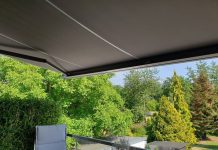
Contents
Last Updated on 25th February 2022
Energy bills are a source of concern for many households across the UK; they have been rising in cost for some time, and today represent a significant threat to smaller budgets all over the country. As a result, many people are looking for effective ways to reduce your energy usage – the vast majority of which comes from heating the home. Here are three key ways to address heat loss in the home, as well as some smaller tips that could all add up to a significant reduction in energy bill expenditure.
Cavity Wall Insulation
The single most effective change you can make with regard to keeping your home warm is to install the right kind of insulation for your exterior walls. Up to 35% of all heat is lost via the exterior walls of your home; ensuring they are correctly insulated can mitigate this heat loss considerably. In the case of cavity walls, injecting cavity wall insulation in the form of a foam or polystyrene beading can generate energy bill savings of up to £245 a year. Solid walls found in pre-1920s properties are a little harder and more expensive to insulate, but can also confer even more savings in terms of energy bills: up to £425 annually.

Draught-Proofing Your Home
Draught-proofing is one of the cheapest measures you can undertake to improve your home’s insulation, and perhaps the easiest to enact yourself without professional help. As a house settles over time, gaps and cracks can appear which let heat out and leech your home’s warmth over time. You can seal gaps around skirting boards, door- and window-frames using decorator’s caulk, while insulating foam can be used to seal the internal frames of any windows that open out.
Minimising Window Heat-Loss
Speaking of windows, the flat and thin surface they provide is perfect for losing heat -especially where older single-glazed windows are concerned. While replacing any single-glazed windows with double- or triple-glazed alternatives would be ideal, the cost is often prohibitive up-front. A more DIY, short-term alternative is to install an acrylic sheet in front of your window, creating an air buffer between the two layers. For an extra-cheap alternative, clingfilm has been touted as a great low-budget way to simulate the effects of double-glazing.
Extra Changes You Can Make
There are many marginal gains that can also be made in the pursuit of energy efficiency, which together can make a real difference to your bills and your carbon footprint. For example, an insulating jacket for your hot water tank can save a small amount of money each year, as can lining the walls behind your radiators with tin foil. Draught excluders for internal doors are great for keeping heat in individual rooms, and installing thicker blackout curtains can prevent heat-loss at night.



































